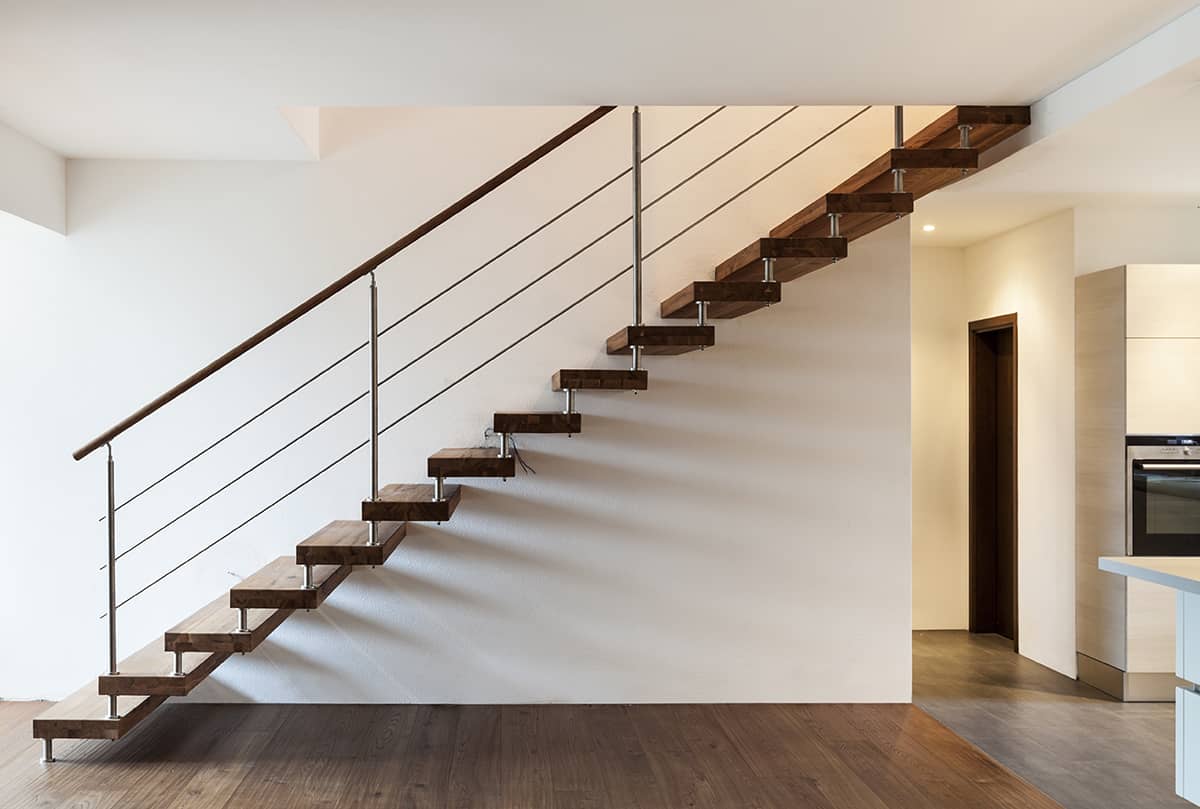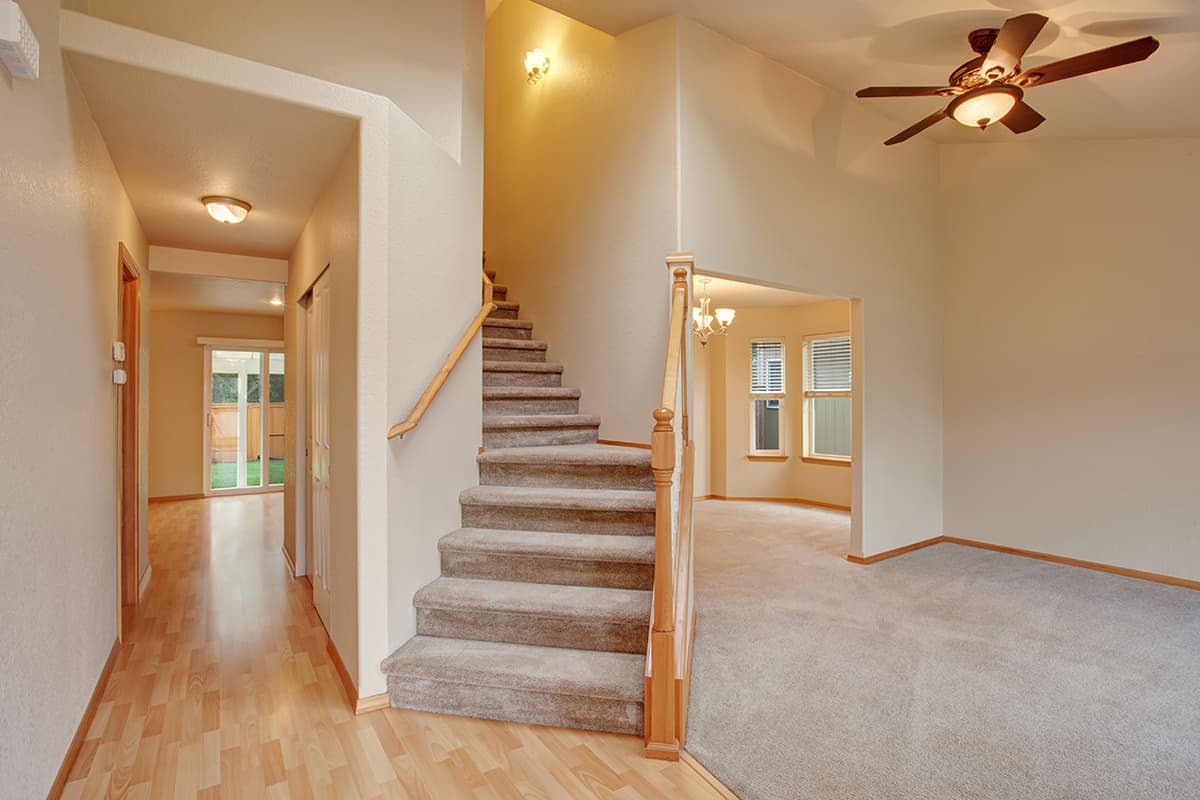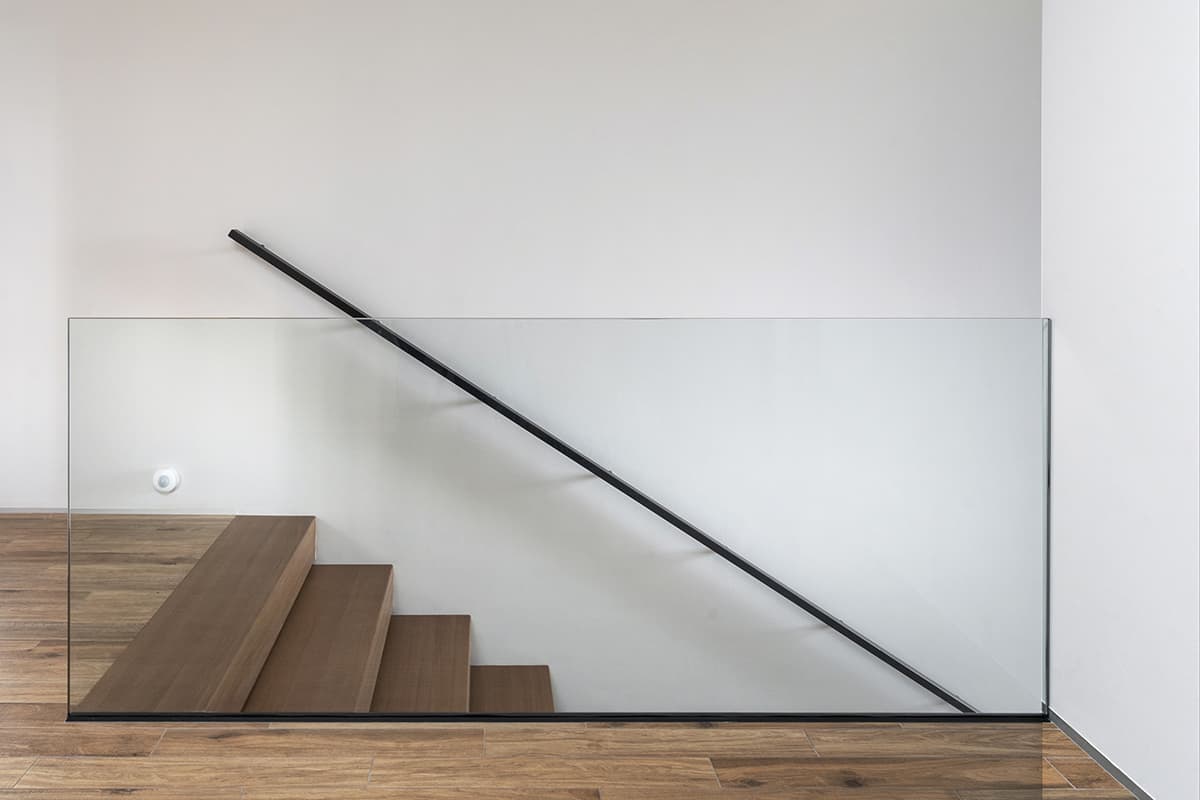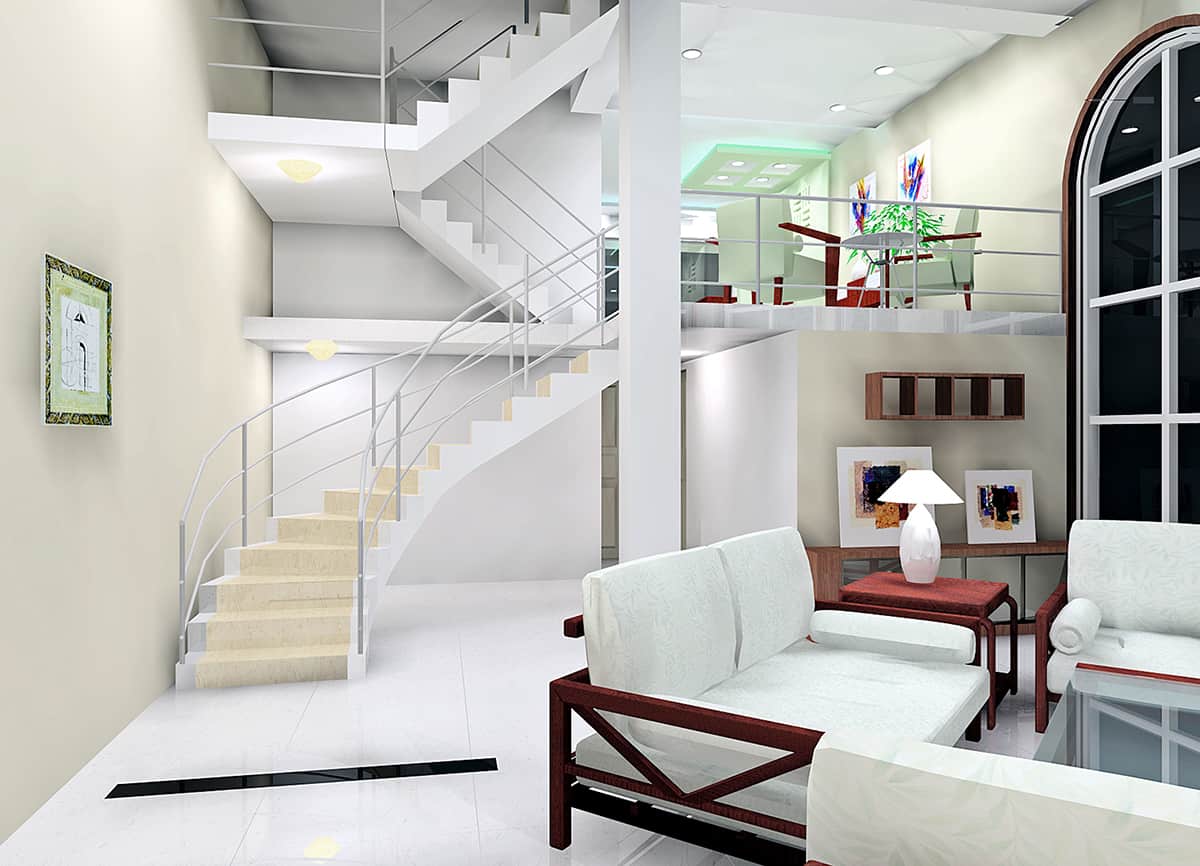If you are renovating your staircase, you are likely to face the decision of choosing between matching the stair flooring to either the downstairs or the upstairs of the home. This will be an easy call if your upstairs and downstairs both have the same flooring, but in many homes, the upstairs and downstairs flooring will be different.
The stairs should work as a transition between the lower and upper floors, so you’ll need to find something that looks good with both flooring types.
Here we will look at possible options that work well when choosing stair flooring to work with upstairs and downstairs flooring.
Non-Matching Carpet Upstairs and Downstairs
If you have carpet flooring on the lower and upper levels of your home, but the carpets are different colors, i.e., they don’t match, then you face the tricky decision of what flooring to use on the stairs to join the two carpets. Here are some situations you might run into.
Two carpets are in the same color palette
For example, the downstairs carpet is dark gray, and the upstairs carpet is light gray, then you have two good options.
You could match the stair carpet to the downstairs carpet and buy the exact same color and texture to make the stairs look like a continuation of the downstairs floor. This will still look good when you reach the top of the stairs because both carpets are shades of gray and, therefore, will coordinate rather than match.
The other option is to choose a stair carpet in a color that sits halfway between the downstairs and upstairs color, so in this scenario, that would be a medium gray carpet.
This allows the stairway to work as a transition between the lower and upper floors, and it also represents the best option if you are renovating your stairs and the exact carpet to match your downstairs carpet is no longer available.
The upstairs carpet and downstairs are completely different, mismatching colors.
This presents a more difficult situation. If, for example, your downstairs carpet is gray, and your upstairs carpet is pink, then you’ll need to make a decision between matching with the gray or matching with the pink, as there is no ‘halfway’ shade between these two colors to transition them.
In this scenario, you need to address the positioning of your stairs within your home and see where they are most visible. In most cases, the stairs are most visible from downstairs.
For many people, you will be able to see the stairs as you open the front door, when you are standing in the entrance way, or when sitting in one of the downstairs rooms, whereas stairs are typically less visible from the upper levels of the home.
This means that when faced with a choice of matching the downstairs carpet or the upstairs carpet, you should most commonly choose to match the downstairs carpet.
Non-Matching Hardwood or Laminate Upstairs and Downstairs
If you have hardwood or laminate on both your upper and lower floors, then it makes sense to continue this theme and have hardwood or laminate on your staircase. However, if you have two different colors of wooden flooring at the top and bottom of the stairs, then it can be really tricky to figure out that type to have on your stairs.
Two colors of wood flooring aren’t too different
For example, if upstairs is honey oak, and downstairs is rustic oak, then you could choose a transition color for your stairs that helps to blend the two together.
Alternatively, you could just choose to match the downstairs flooring exactly, and it won’t look odd next to the upstairs flooring because they will be in the same color palette.
Wood flooring downstairs is entirely different from your wood flooring upstairs
The best option is to simply match your stairs with the downstairs flooring, assuming your stairs are most visible from the lower level of the property.
Wood Flooring Downstairs and Carpet Upstairs
If you have two entirely different types of flooring surface on the upper and lower levels of your home, then you will have to not only decide on a color that can coordinate with both but also a flooring type. Here are some situations you might have
The wood floor and the carpet floor are of a similar tone
For example, if the wood floor is beech, and the carpet is a sandy beige color, then the transition between each will be almost imperceptible because the colors match. In this instance, you can opt for beech wood stairs to match the downstairs or beige carpet stairs to match the upstairs. Either will work really well, and it comes down to personal preference.
Many people in this scenario would opt for the beige stair carpet because carpet presents a softer and safer stair surface, and it is also typically much less expensive to get fitted on a staircase compared with hardwood or laminate that would involve lots of cutting, and therefore a high labor cost.
Your wood flooring and carpet flooring are very different shades
If that happens, you can choose to match your stairs to either one.
If the colors make a nice contrast. For example, chestnut hardwood flooring in a rich orange-brown shade with navy blue carpet, then try to make a feature out of this.
Match the stairs to the navy carpet, and then stain stair railings in chestnut to tie in the downstairs hardwood floor. You could also add burnt orange photo frames to the stair wall to help with continuity between the upper and lower floors.
Alternatively, you could incorporate both flooring elements from upstairs and downstairs and use them both on the staircase.
To do this, choose a wooden flooring surface for your stairs, and then add a carpet stair runner. This will enable you to see the wooden surface on either side of the runner, with the added benefit of having a softer surface underfoot when using the stairs.
Tile Flooring Downstairs and Carpet Upstairs
If you have a tiled floor in your entryway and carpet flooring upstairs, you might be confused as to what surface you should use on your stairs.
The tiles are a plain color
You can choose a stair carpet to match your upstairs carpet, and tie in the tile color with accessories on the stair wall. For example, if your tiles are black, add black picture frames to your stair wall and make a feature out of the changing colors.
The tiles have a pattern in them
You could pick a color out of the pattern and choose a carpet in this color to tie the upstairs and downstairs together.
Generally, the better option here would be to choose carpet as a stairs surface rather than tile because tiles can be slippery, and if you fall, they will make for a harsh surface to land on.
Carpet, by comparison, offers more traction underfoot, so is less likely to cause accidents. If you do fall on carpet stairs, your landing will be slightly cushioned so that a severe injury is much less common.









